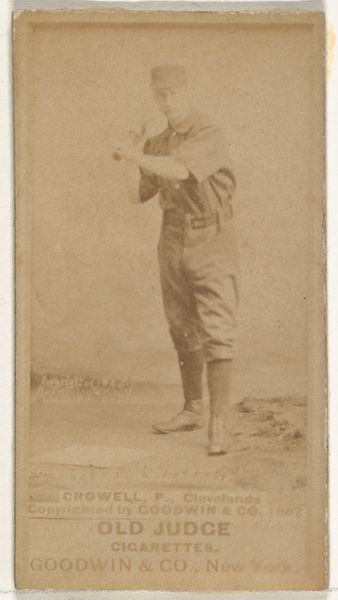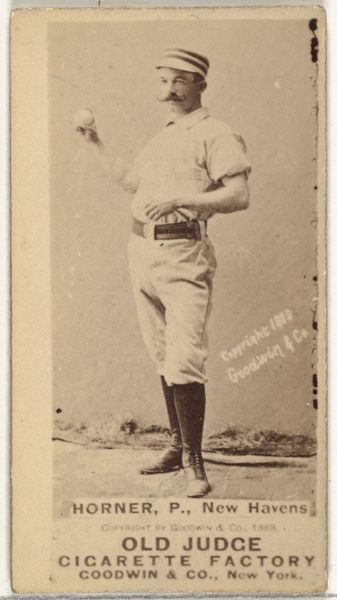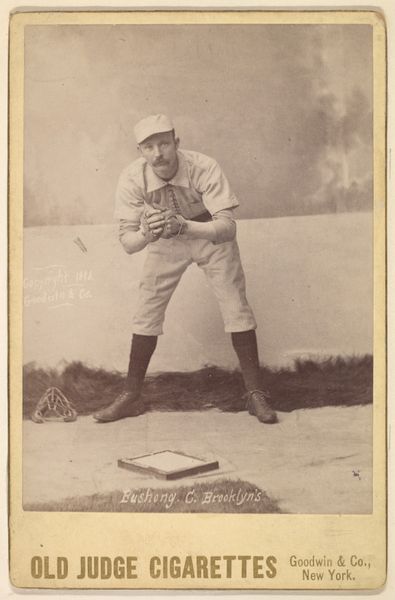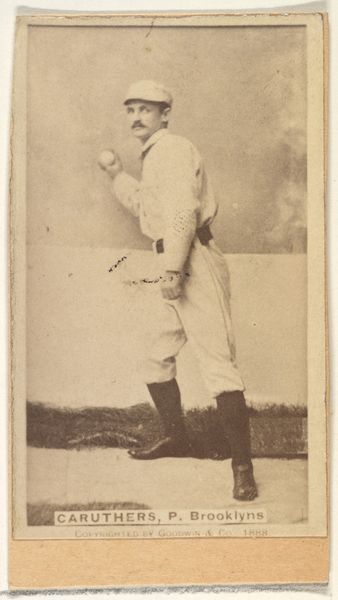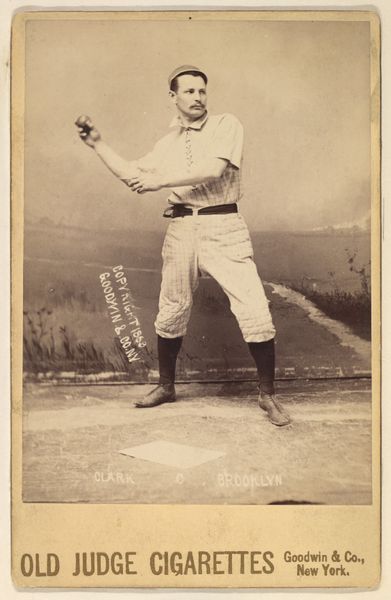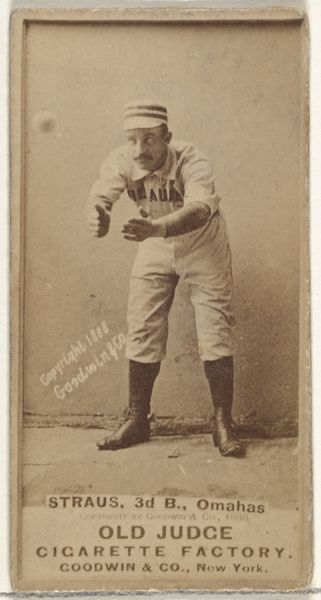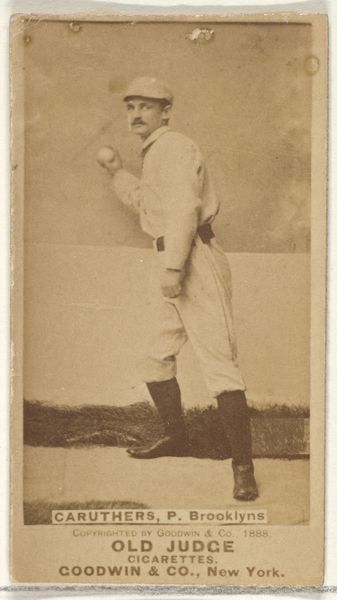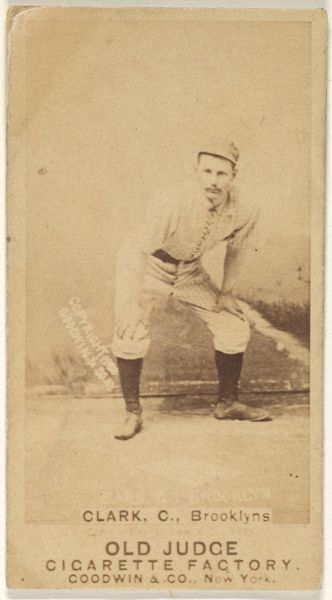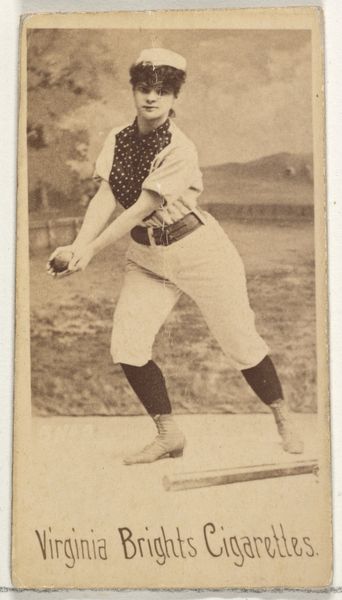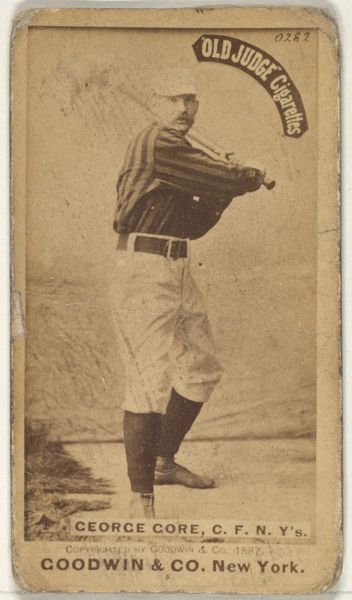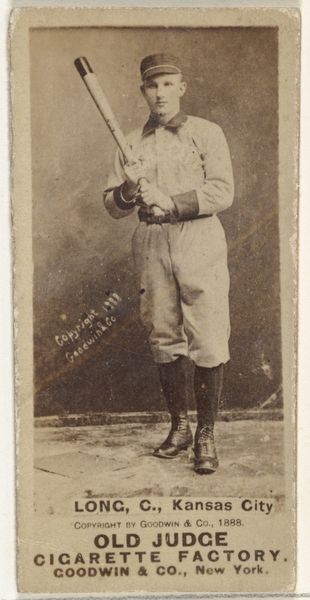
Visner, Catcher, Brooklyn Bridegrooms, from the Old Judge series (N172) for Old Judge Cigarettes 1888
0:00
0:00
drawing, print, photography, albumen-print
#
portrait
#
drawing
# print
#
charcoal drawing
#
photography
#
men
#
albumen-print
Dimensions: sheet: 2 11/16 x 1 3/8 in. (6.9 x 3.5 cm)
Copyright: Public Domain
Editor: This albumen print from 1888, a baseball card featuring Visner, a catcher for the Brooklyn Bridegrooms, is intriguing. It seems almost accidental, a quick snapshot in time intended to sell cigarettes. What stands out to you about this piece? Curator: I find the inherent contradiction fascinating. We have a supposedly mass-produced object, a tobacco card, attempting to capture an individual, Visner, within the burgeoning industry of baseball. The "Old Judge Cigarette Factory" blazoned across the bottom speaks volumes about the confluence of advertising, leisure, and labor in late 19th-century America. Editor: So you’re focusing on the context in which it was produced. Curator: Precisely. Consider the material itself, the albumen print. What were the labor practices involved in its making? How many hands touched this image before it reached a collector? What kind of consumption cycle does this represent? The fact that photography, which originally held promise to deliver faithful representation, here serves the industry selling addiction… What do you think of the seemingly simple, yet staged and somewhat clumsy pose of the player? Editor: That's a good point about labor. His awkward stance adds another layer, highlighting perhaps the manufactured nature of the image itself, the gap between reality and its presentation. And I agree, using albumen prints seems almost archaic for mass consumption. Curator: Indeed! The very choice of this medium speaks to a transitional period, where old technologies were harnessed for new modes of production and consumption. Are the cards promoting baseball or is baseball promoting tobacco? What is the actual subject, do you think? Editor: This conversation is opening my eyes. I hadn't really considered how the means of production and the object being sold are so intrinsically linked. I now think the subject isn't simply Visner, but how he represents this complex interplay of labor, leisure, and commercialism at the turn of the century. Curator: Exactly! Looking at the materials and their context can often unlock richer interpretations of art.
Comments
No comments
Be the first to comment and join the conversation on the ultimate creative platform.
